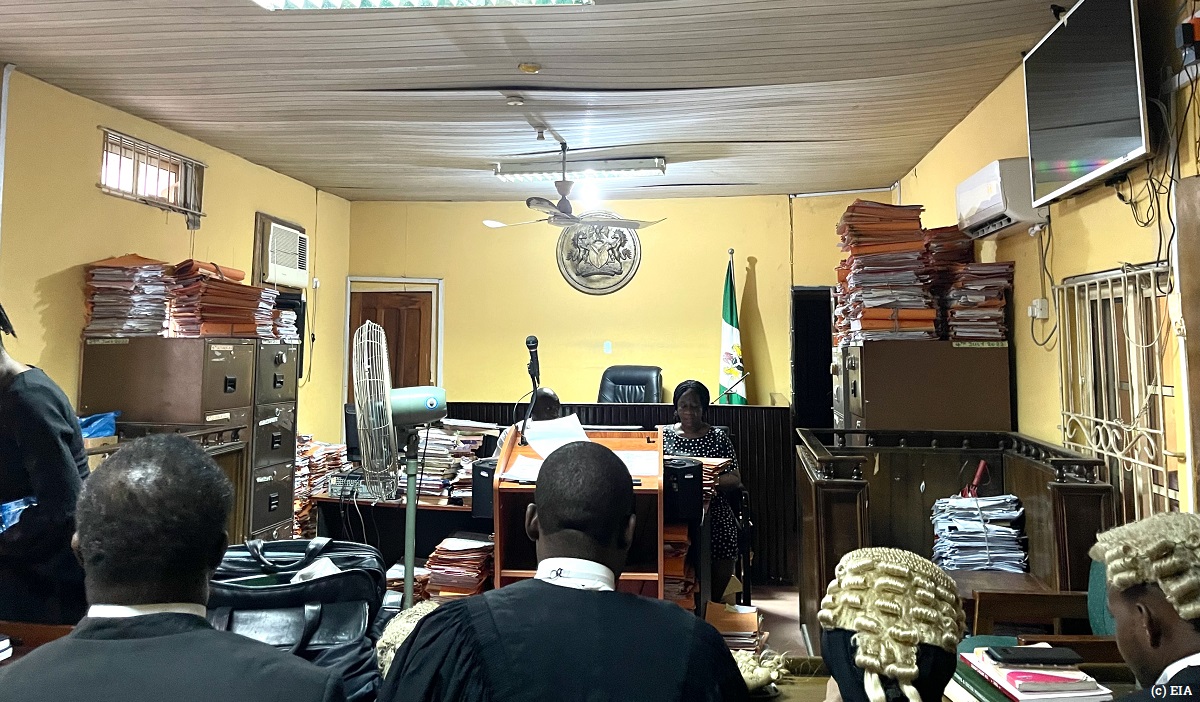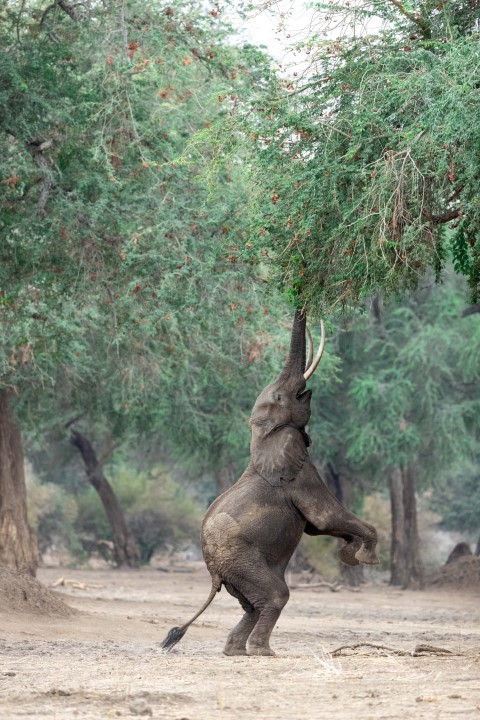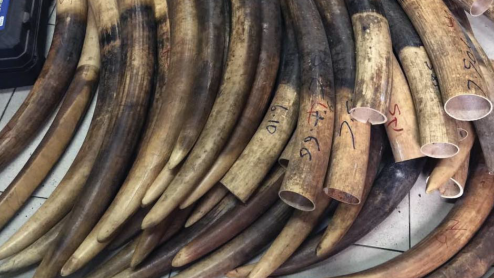Giving a voice in court to the ‘victim’ species suffering at the hands of the illegal wildlife trade
To celebrate EIA’s long-standing collaboration with diverse partners, we’re pleased to host this guest blog from Amanda Whitfort, Associate Professor at the Faculty of Law at the University of Hong Kong and a Barrister of the High Court of Hong Kong. Amanda specialises in criminal procedure, wildlife crime and animal protection law and has sat on the legal working party advising the Hong Kong Agriculture Fisheries and Conservation Department on animal management since 2010. She is a key partner in EIA’s successful campaign in 2021 to amend Hong Kong’s Organised and Serious Crime Ordinance for it to cover the illegal trade of protected species. Amanda and her team started the Species Victim Impact Statements (SVIS) Initiative in 2015 to provide law enforcement authorities with reliable scientific data and to improve successful prosecution rates. The latest success of our collaboration is the inclusion of SVIS in the Nigeria Wildlife Crime Rapid Reference Guide, launched by the UN Office on Drugs and Crime on World Wildlife Day 2023.

Lagos Federal Court, Nigeria – species targeted by illegal wildlife trade need a voice in court (c) EIA
I am delighted that Species Victim Impact Statements for pangolins and elephants are now being used to help prosecutors and investigators in the fight against wildlife crime in Nigeria.
They were developed by my team at the University of Hong Kong (HKU) for use in Asia and, together with the EIA team in Africa, have recently been adapted to suit the Nigerian criminal justice system.
It is a global problem that judges and prosecutors dealing with wildlife crimes often lack access to robust and reliable scientific information, making it difficult for them to accurately assess the harms done to endangered species and the ecosystems they were taken from. The lack of appropriate knowledge results in lenient sentences that fail to act as deterrents to a lucrative crime, from which enormous profit can be made, even from a small shipment or a few individual animals.
Judges will not necessarily realise that the animals trafficked in the case before them represent perhaps the last 100 members of their species unless they are given the correct scientific data by the prosecution.
In the past 20 years, the wildlife trade has been supercharged by globalisation, the information revolution and rising incomes in Asia. The number of species traded is staggering – more than 7,600 species of terrestrial animals; more than a third of all reptile species and a quarter of all bird species are captured and sold.
Sadly, the illegal wildlife trade remains a low-risk, high-profit crime due to insufficient criminal justice.

Pangolin scales and ivory seized in Nigeria
The wildlife trade has grown so much that scientists are warning us it is now eroding the stability of the world’s ecosystems. However, the training that legal professionals receive has not caught up with the scale of the illegal wildlife trade. Species Victim Impact Statements are a fast and effective way for judges and prosecutors to learn about the harm done by illegal wildlife crime to the animals, plants and ecosystems concerned, as well as to the communities who live where the species was captured or killed.
The SVIS initiative started in 2016 when, as part of my research, I learned that environmental organisations in Scotland were being permitted to submit to courts summaries of environmental impacts on species affected by environmental crimes. Given Hong Kong’s status as a wildlife trading hub, I decided a procedure needed to be developed to give animals, plants and ecosystems a voice in Hong Kong’s courts. One of the things that I had observed as a criminal lawyer in Hong Kong was that the judiciary didn’t always get the information needed to make the most effective sentencing decisions.
To remedy this problem, I decided to bring together experts in law and science to develop a voice for animals, plants and ecosystems in the criminal justice system. I partnered with Dr Gary Ades, Head of Fauna at the Kadoorie Biological Farm and Botanical Garden, who provided a list of the most common species trafficked through Hong Kong. HKU researchers reviewed the latest scientific literature on those species and we drafted a set of documents that could be used in a court.
We initially created 33 SVIS. I worked with the previous head of the Conservation Forensics Laboratory in the School of Biological Sciences at HKU, Dr Caroline Dingle, and, together with Dr Pavel Toropov, we expanded the project to 130 SVIS.
The SVIS not only include charismatic megafauna such as rhinos and elephants, but also focused on species that are less well known but heavily exploited by the illegal wildlife trade – the ploughshare tortoise, the golden coin turtle, humphead wrasse, helmeted hornbill and species of coral and incense trees.
The statements are regularly updated to take account of the latest scientific research and SVIS dealing with additional species are being developed as needed.
It was clear to us at the beginning that drafting the SVIS was only the first step; enforcement authorities and prosecutors needed guidance on how to use them effectively. In 2017 we began training staff from Hong Kong’s Agriculture Fisheries and Conservation Department and Customs and Excise Department about how to use information from the SVIS to better present wildlife cases in court. Then, in 2018, we developed a programme for the judiciary, producing a series of training videos to explain how the Species Victim Impact Statements can be use by a court. We also instructed senior prosecutors in the Department of Justice in the effective use of SVIS in both contested trials and guilty pleas.
Each statement involves input from at least two, but sometimes five, six or seven, experts to advise on the latest science. Most have been associated with the Division of Ecology & Biodiversity in HKU’s School of Biological Sciences.
The statements set out the species’ CITES listing, its IUCN Red List category and range countries and provides information on, inter alia, ecosystem impacts through exploitation, population depletion trends, food chain effects, keystone species concerns, disease and pathogen risks such as potential for zoonotic disease.
Practical information such as monetary values on the black market and relevant sentencing decisions – based on the same species in other jurisdictions – as well as the fate of consignments and welfare concerns for particular species in harvesting and transport are also included. SVIS further provide information on forensic evidence and tools available for use in contested cases. Here, the expertise of the HKU Conservation Forensics Laboratory is relied upon.
The judiciary in Hong Kong has been particularly receptive to the SVIS and their use has resulted in penalty increases of more than 2,000 per cent since the initiative began. SVIS have now been adapted for use in mainland China by the Wildlife Conservation Society and for investigators and prosecutors in Laos and Thailand, in collaboration with WWF Greater Mekong and the Wildlife Justice Commission.
They have been featured in training programmes for judges, prosecutors and investigators organised across South-East Asia by the US Department of Justice’s Regional Legal Advisor for Counter Wildlife Trafficking, Panthera, Freeland and Planet Indonesia and, in South Africa, by the Endangered Wildlife Trust.
Working with EIA, we are proud that our SVIS for pangolins and elephant have been included in the UNODC Nigeria Wildlife Crime Rapid Reference Guide and look forward to them informing the sentencing of the wildlife criminals who deprive Nigeria of these magnificent and threatened animals.






